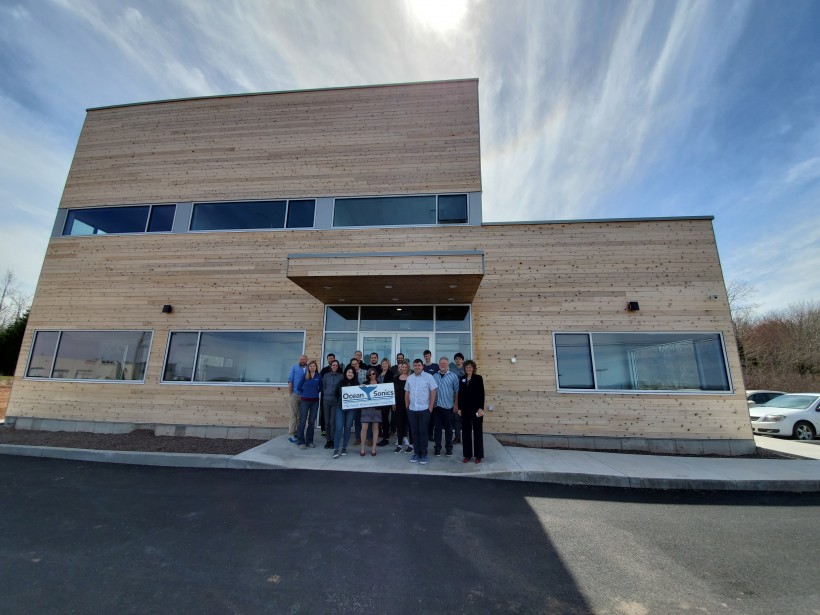Ocean Sonics, the Nova Scotia-based maker of equipment that listens to and monitors the oceans, has moved into a new headquarters in Truro Heights that will facilitate growth of staff, innovation and sales.
Ocean Sonics designs and manufactures the icListen smart hydrophones and other products that improve the quality and analysis of underwater sound measurements.
The company has long been based in the water-side hamlet of Great Village and has expanded rapidly in recent years. It has 18 full-time employees and is advertising nationally and internationally for software developers, electronic engineers and sales people.
“We are constantly innovating. When you have innovative people, you have to keep them interested and improving. You have to keep them innovating and making products and selling,” said co-owner and operations manager Desiree Stockermans in an interview.
The company is looking to expand beyond its main markets of Asia, Europe and North America into South America and Australia.
“We believe we are the best in the world and we want to let everyone else know we are,” Stockermans said with a smile.
The company’s growth prospects are enviable as the monitoring and measuring of underwater sounds is a new and growing market with an increasing range of applications.
Stockermans said the company has many research clients, and that Ocean Sonic products have real-time applications and can process the data they collect right away.
“The hydrophone has been around since World War II when the first submarines went in the water; hydrophones have mostly been used for that type of application,” said Stockermans.
“Now, they are being used to increase understanding of the ocean and what’s going on in the water. We are in the right place with the right products and we can take advantage of that to grow.”
Marine engineer Mark Wood and Stockermans co-founded their first venture Instrument Concepts in Great Village in 2000. Ocean Sonics branched off in 2012 in order to focus on developing and selling its products. (Instrument Concepts remains the consultancy side of the business.)
Applications include the monitoring of the sounds made by whales, such as the endangered right whale.
“It’s possible one of the reasons they are getting caught in traps is because they are shifting north because their food source is moving north with changing water temperatures,” said Stockermans. “We can tell things about changes in climate from changes in the behaviours of marine life.
“In the past, you could hear a sound, then you could tell where it was coming from. Now, you can tell where it’s coming from and where it’s going. You can identify the whale and where it’s going. If it’s toward a ship, you can notify the ship to slow down or alter course.”
The company is one of the providers contributing to a Department of Fisheries and Oceans network of hydrophones established in the Vancouver Harbour area to gauge the reaction of marine mammals to loud noises, such as construction noise and sounds made by shipping traffic.
Stockermans said it’s important to measure and understand these things before regulations on issues such as shipping speeds are made.
The development of off-shore wind farms in the eastern U.S. is an area of growth. Sounds are studied before, during, and after construction to provide the full picture of the impact of human activity.
The company is proud that their new headquarters reflects their values. Ocean Sonics is a certified B Corp (a for-profit company pledged to provide positive impacts for their employees, communities and the planet). The new building has a low impact on the environment, with potential for a living green roof. All materials and labour are either sustainably or locally sourced.
Ocean Sonics worked with partners from Business Development Bank of Canada, Architects Omar Gandhi and Eric Stotts, and Lindsay Construction to create the building. The project was supported by the Government of Canada.










